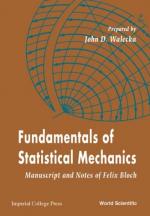|
This section contains 397 words (approx. 2 pages at 300 words per page) |
World of Scientific Discovery on Felix Bloch
Felix Bloch is one of two scientists who, working independently, simultaneously discovered a process by which the magnetic properties of atoms could be observed and measured. His work was an extension of Isidor Isaac Rabi's research, and it helped bring into the forefront of science the growing field of nuclear physics.
Bloch was born and educated in Zurich, Switzerland. Interested originally in engineering, he took only one course at Zurich's Federal Institute of Technology before he knew that physics would be his forte. He graduated in 1927 and promptly enrolled at the University of Leipzig, receiving his Ph.D. just a year later. After earning his doctorate, Bloch held several fellowships, enabling him to work with Niels Bohr and Enrico Fermi. He was appointed to a professorship at Leipzig in 1932, but left Germany when Hitler rose to power the next year. He studied briefly in Holland, Denmark, and Italy, before settling in the United States in 1934. He became an associate professor at Stanford University in 1939, the same year he became an American citizen.
Bloch's first major research in America came during World War II, when he was assigned to the atomic bomb project at the Los Alamos Laboratory. He also conducted extensive research using radar and radio technology, and it was this experience that he took back to Stanford in 1946.
In the 1930s, Rabi had discovered a process by which the magnetic properties of nuclei could be measured. Unfortunately, the process required that the sample be vaporized--and thus destroyed--in order to study it. Bloch set out to develop a new process that was more precise than Rabi's and left the sample intact. He knew that when an atom is in a magnetic field, the magnetic potential causes the nuclei in it to wobble as it spins. Bloch then used a radio signal to trigger nuclear magnetic resonance (NMR) --that is, the moment when the nuclei's spin reverses direction. If the radio frequency at which NMR occurs is known, it is possible to measure the magnetic properties with tremendous precision.
At the same time, another American scientist, Edward Purcell, had developed a process nearly identical to Bloch 's. Not surprisingly, Purcell also studied radar during World War II. Purcell went on to adapt the NMR process for use in detecting interstellar hydrogen, establishing the science of radio astronomy. Bloch and Purcell shared the 1952 Nobel Prize for physics.
|
This section contains 397 words (approx. 2 pages at 300 words per page) |


